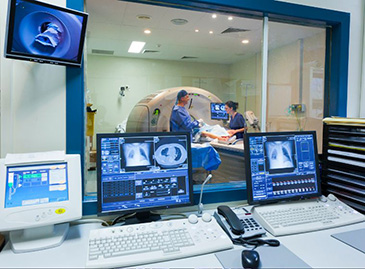
Brain Tumors: Types, Symptoms, and Treatment Options
A brain tumor is a description of an abnormal tissue mass or uncontrollable growth of abnormal cells in your brain. Experts indicate that there are different types. Some may be cancerous (malignant), while others may be noncancerous (benign). However, the benign ones can also be life-threatening, just like malignant. They grow slowly but do not spread to other tissues.
In addition, the abnormal growth of cells in the brain can increase the pressure inside the skull. An increase in pressure in the head may eventually cause brain damage or death. A brain tumor can form in any part of the brain. Experts suggest that over 150 types of tumors in the brain have been documented. A report from the American society of clinical oncology states that over 308,102 people were diagnosed with primary brain tumors in 2020.
Components of the Brain
We will briefly discuss what makes up a human brain. Anatomists indicate that the human brain consists of three main parts. These parts include the cerebrum, the cerebellum, and the brain stem. However, further studies often classify the meninges as another component of the brain. The meninges form a significant part surrounding the brain and the spinal cord.
- Cerebrum: The cerebrum forms the largest part of your brain. It consists of two cerebral hemispheres on both sides of the brain. The hemispheres control both sides of the body. Furthermore, the cerebral hemispheres consist of the frontal lobe, parietal lobe, temporal lobe, and occipital lobe.
- The cerebellum: It is situated behind the brain, below the cerebrum. The cerebellum helps coordinate and balance the voluntary functions of the body, such as body movement.
- Brain stem: This connects to the cerebellum and the spinal cord. The brain stem also helps control involuntary functions such as breathing and heartbeat.
- Meninges: The meninges are protection membranes. They surround the brain and the spinal cord. The meninges consist of layers: the dura mater, arachnoid, and pia mater.
Types of Brain Tumor
Researchers indicate that brain tumors are of two categories. The tumors are either primary or secondary. However, we will take you through the most familiar forms of these tumors base on their categories.
Category One – Primary Brain Tumors
A primary brain tumor emerges in the brain. It can be a “low grade” or a “high grade” tumor. A low-grade tumor in the brain grows slowly. At the same time, a high-grade tumor can grow fast. You have to bear in mind that a low-grade tumor can turn into a high-grade tumor in the long run. The most familiar types of primary brain tumors are;
- Gliomas
- Meningiomas
- Pineal and pituitary gland tumors
- Pediatric Brain Tumor – Craniopharyngiomas
- Ependymomas
- Primary central nervous system (CNS) lymphomas
- Germ cell tumor of the brain
- Schwannomas
However, these types of tumors often originate from the brain cells, meninges, nerve cells, and glands such as the pituitary gland. Reports show that gliomas and meningiomas are the two most familiar types of brain tumors in adults.
Category Two – Secondary Brain Tumors
Furthermore, secondary tumors are also known as ” brain metastasis.” Brain metastasis is a cancerous tumor that begins from another part of the body and spreads to the brain. Different types of cancerous cells can rapidly spread to the brain. Depending on the type of cancer that metastasizes, it might take a long time to extend to the brain. But, the few commonest type of cancer that can metastasize quickly to the brain include;
- Kidney cancer
- Breast cancer
- Lung cancer
- Skin cancer
- Colon cancer
- Melanoma
In addition, researchers suggest that secondary brain tumors are often malignant.
Possible signs and symptoms
You may experience some symptoms if you have a brain tumor. Depending on the site of occurrence and type of tumor, symptoms may vary. Generally, the symptoms may be overwhelming and challenging. But, seek your doctor’s advice for possible evaluations and examinations immediately. The general symptoms may include;
- Frequent severe headache
- Seizures, mostly in someone without a history of seizures
- Sudden change in memory or personality
- Frequent vomiting
- Unexplainable fatigue
- Sleeping problem
- Sudden loss of ability to carry out your daily activities
- Difficulty in hearing
- Gradual loss of balance and mobility
- Changes in speech
- Partial or complete loss of vision
In addition, if you feel any of these signs and symptoms, Kindly speak with your doctor immediately. Your doctor may ask about the duration of the signs and symptoms you notice. They will help you figure out what the problem may be.
Risk factors
In addition, an oncologist suggests that some factors may increase your chances of developing a brain tumor. Although, these factors can influence or contribute to its development. But, researchers indicate that these factors cannot directly cause any form of brain tumor. The following are the most familiar risk factors:
Age:
Brain tumors can occur at any age. But, it is reported that they occur more in children and older adults.
Exposures to solvents :
Exposure to solvents such as vinyl chloride, pesticides, and rubber at home, your workplace, or in your immediate environment can increase your chances of brain tumors. Although, this postulation is still under review by experts.
Gender :
Brain tumors are more common in men than in women. The American society of clinical oncology (ASCO) report shows that 14,170 men and 10,880 women have already been diagnosed with brain tumors in the United States in 2022.
Family history
If you have related by the blood that has been diagnosed with a brain tumor, you might be at risk of developing one too. However, researchers have linked about 5% of brain tumors to hereditary genetic factors.
Ethnicity and Race
Your race and ethnicity may play a significant role in the risk of developing brain tumors. According to reports, in the United States, white people are at a higher risk of developing gliomas than black people. In contrast, black people are at a higher risk of developing meningioma. Furthermore, people from Northern Europe have a higher chance of developing brain tumors than the Japanese.
Head injuries and seizures :
Some studies show that there may be a link between head injuries and meningioma. However, a history of seizures has also been linked to brain tumor development.
Exposure to ionizing radiation :
If you have a history of treatment to the head or brain with ionizing radiation such as x-rays, you might be at risk of developing a brain tumor.
Diagnosis
Generally, the diagnosis of tumors has taken a new dimension. You might have to undergo different blood tests and scans. Diagnostic machines such as magnetic resonance imaging (MRI) machines and computed tomography (CT) machines can help pinpoint brain tumors. There are some factors that your surgeon may consider when choosing a diagnostic test. This includes;
- Tumor type suspected
- The signs and symptoms that you notice
- Your general health condition and age
- Result of previous medical test
A neurologist will help in diagnosing any form of tumor. After the imaging with an MRI scan shows there is a tumor in the brain, you might require a biopsy to determine the type of tumor and grade. After these tests, your doctor reviews the result with you. The treatment plan will commence, and your doctor will help you make an informed decision about the condition.
Treatment options for brain tumor
A healthcare team that consists of a neurosurgeon, radiologist, pharmacists, oncology nurses, and social workers will always help you live a more comfortable life after diagnosis. However, finding the best treatment options for you may depend on certain factors, which are;
- Grade, type, and size of the tumor
- Tumors put pressure on vital parts of the brain
- Side effects that may come with the option
- Patient overall health and decision.
Furthermore, treatment options may include surgery, radiation therapies, targeted therapy, and chemotherapy. The preferable option for a low-grade brain tumor is surgery. After the surgery, if there are still some traces of tumors, then your surgeon might use radiation therapy and chemotherapy to complete the treatment. In addition, for high-grade tumors, your surgeon will often begin treatment with surgery and follow up with radiation therapy and chemotherapy.
Conclusion
Treating this condition can be challenging and comes with its side effect. Generally, the blood-brain barrier protects your brain and spinal cord from harmful chemicals. This can as well block some types of chemotherapy options. Radiation therapy can also damage some healthy tissues in the brain. Ensure you have a well-detailed discussion with your healthcare team on the side effect that may come with your desired treatment option.
You may require palliative or supportive care to manage brain tumor treatment’s emotional, physical, and social effects. Palliative treatment may include emotional and spiritual support, dietary changes, techniques for relaxation, and other therapies.
Pacemaker For Heart Price Turkey



